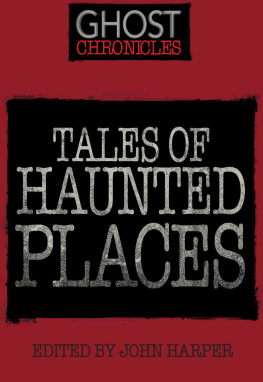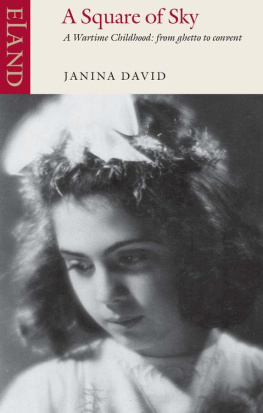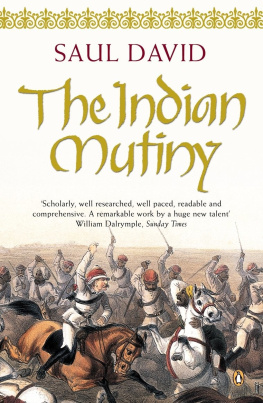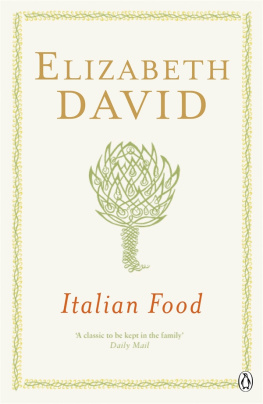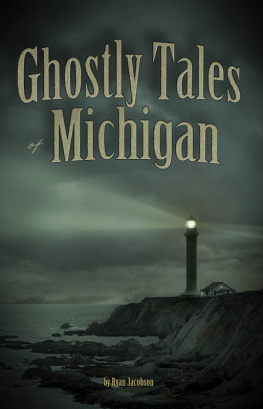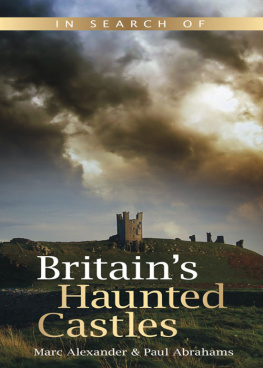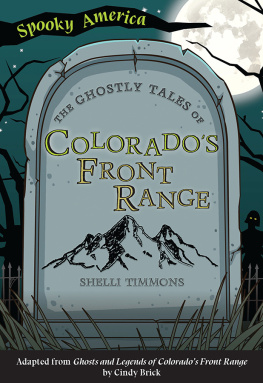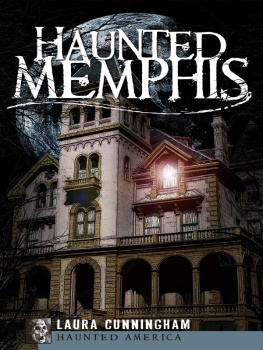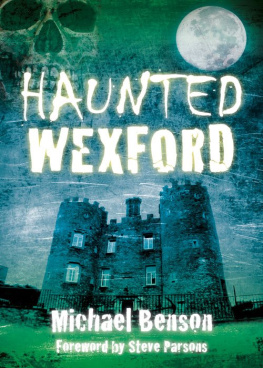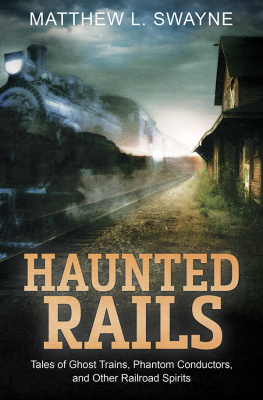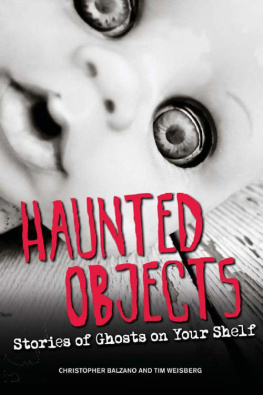David - Tales of Haunted Places
Here you can read online David - Tales of Haunted Places full text of the book (entire story) in english for free. Download pdf and epub, get meaning, cover and reviews about this ebook. year: 2010, publisher: F+W Media, genre: Detective and thriller. Description of the work, (preface) as well as reviews are available. Best literature library LitArk.com created for fans of good reading and offers a wide selection of genres:
Romance novel
Science fiction
Adventure
Detective
Science
History
Home and family
Prose
Art
Politics
Computer
Non-fiction
Religion
Business
Children
Humor
Choose a favorite category and find really read worthwhile books. Enjoy immersion in the world of imagination, feel the emotions of the characters or learn something new for yourself, make an fascinating discovery.
- Book:Tales of Haunted Places
- Author:
- Publisher:F+W Media
- Genre:
- Year:2010
- Rating:5 / 5
- Favourites:Add to favourites
- Your mark:
- 100
- 1
- 2
- 3
- 4
- 5
Tales of Haunted Places: summary, description and annotation
We offer to read an annotation, description, summary or preface (depends on what the author of the book "Tales of Haunted Places" wrote himself). If you haven't found the necessary information about the book — write in the comments, we will try to find it.
The ultimate haunted house collection of ghost stories. This book is full of terrifying tales of ghostly happenings in various castles, cemeteries and battlefields. Spine-tingling tales including the Strange Visitor of Covent Garden.
Tales of Haunted Places — read online for free the complete book (whole text) full work
Below is the text of the book, divided by pages. System saving the place of the last page read, allows you to conveniently read the book "Tales of Haunted Places" online for free, without having to search again every time where you left off. Put a bookmark, and you can go to the page where you finished reading at any time.
Font size:
Interval:
Bookmark:
GHOST
CHRONICLES
TALES OF
HAUNTED
PLACES
EDITED BY JOHN HARPER
T he news of Amy Robsart's tragic and mysterious death on Sunday, 8 September 1560 not only shocked England but half Europe as well. Rumours flashed from lip to lip, from country to country; ambassadors reported hurriedly to their princes and sovereigns. All waited expectantly for the next move on the political chessboard, and none more than Philip of Spain. Was it accidental death, or suicide, or even murder? What would her husband, the rakish, dashing Robert Dudley, later Earl of Leicester, the leading favourite and, some whispered, even the lover of Queen Elizabeth, do now?
For eight years after her marriage Amy Robsart, daughter of Sir John Robsart of Norfolk, had lived in Lincolnshire. She and her husband had then gone to Berkshire staying with their friends, the Hydes of Denchworth, before moving in to Cumnor Hall in the same county, where Anthony Forster was steward, household treasurer and personal friend of Robert Dudley. On that fatal night a fair was being held at nearby Abingdon, where Amy gave her staff permission to go and enjoy themselves; indeed, she actually urged them to go. When they had all gone, according to evidence later given at the trial, she sat down to play at tables with three lady friends. One of them, Mrs Owen, a widow and sister of Amy's friend Mrs Hyde, stayed on alone to dine with Amy before going home herself. When the staff returned late that night the house was still and quiet, a sense of doom over it. This was proved almost at once when they found the body of their young and beautiful mistress lying at the bottom of the wide staircase. Her neck was broken and showed unmistakable signs of strangulation. Her face was badly bruised, and her lips were blue with the poison which had obviously been forced between them.
Almost at once her ghost began to haunt the house, the gardens, the courtyard, but most of all the staircase, so that none of her servants dared go up to their rooms. For over 400 years her ghost has appeared, not only there but as far away as Kenilworth. As the years passed tenants came and went, never staying long, driven out by the terrifying screams of a woman, and the sight of her ghost appearing at all hours of the day and night. Attempts were made to exorcise it finally by the customary nine priests who came from Oxford. They tried to lay Amy's restless and unhappy spirit to rest forever in a pond, known since as Lady Dudley's pond. It is said that never afterwards did the pond freeze, but the exorcism did nothing to allay her ghost. In 1814, being no longer inhabitable, the house was demolished, many of its stones being taken away by the fifth Earl of Abingdon to rebuild Wytham Church. But still her ghost flits among the ruins and has even been seen comparatively recently.
William Julius Mickle, a poet of the latter half of the eighteenth century, composed a ballad on her tragic death:
Sore and sad that lady grieved
In Cumnor Hall, so lone and drear;
Full many a piercing scream was heard
And many a cry of mortal fear.
The death knell thrice was heard to ring,
An aerial voice was heard to call;
And thrice the raven flapped its wing
Around the towers of Cumnor Hall.
And in that manor now no more
Is cheerful feast and sprightly ball:
For ever since that dreary hour
Have spirits haunted Cumnor Hall.
The village maids with fearful glance
Avoid the ancient moss-grown wall,
Nor ever lead the sprightly dance
Among the groves of Cumnor Hall.
All that now remains of Cumnor Hall is close to the church, almost a part of it; fragments of wall and the open fireplace of the once splendid mansion in which Amy Robsart died. Here her spirit now moves and has often been seen, perhaps restlessly seeking the long-vanished staircase at the foot of which she was found dead on that Sunday night over 450 years ago.
To judge from extant letters at Longleat, home of the Marquis of Bath, and in Cumnor Church vestry itself, she and her husband were reasonably happy, for she wrote graciously and affectionately of and to my dear lord. She dealt with the estate, with the help of Anthony Forster, who beside being the steward was the MP for Abingdon, showing her skill and attention for the care of the property, the sale of sheep and wool, and the well-being of the servants. Throughout her husband's long and frequent absences at Court, Amy was accustomed to being often alone, never suspecting that there were far more cogent reasons for her husband's being so often with the Queen. The Spanish ambassador was already writing of Dudley's over preposterous pretentions and, more warningly, should something untoward happen for the king that is to be. Inevitably the gossip spread from London across the country and finally to Cumnor, where a stunned and unhappy Amy first heard the whispers that were so swiftly to lead to her death. If she knew nothing of what a contemporary writer described as Dudley's peacock personality, she must surely have known of his extravagance and gluttony, his love of fine clothes, his courtly manners, his handsome features, and the skill at dancing which first endeared him to the Queen. Of his ruthlessness, cruelty, uncontrollable ambition and lechery, she perhaps knew nothing, or kept what she knew to herself, but she grew more and more unhappy and apprehensive of something she could not understand.
Dudley's own household books during this time however, and on his infrequent visits to Cumnor Hall, seemed concise and agreeable enough, describing visits to the estate farms, to friends and local people. His restless spirit and love for his queen, the most glittering star in his firmament, soon drove him back to Court again. Amy herself, by virtue of her own descent and now high rank, was quite well aware of the intrigues and subtleties of life at Court, but it was not until after her death that Mrs Pinto, her personal maid, revealed how many times she had seen her mistress weep and pray to God to deliver her from her desperation. Indeed, it was this very statement which led many people to believe that she committed suicide, though it is hardly feasible that she would have done this unless she had absolute evidence of her husband's infidelity.
Once again the Spanish ambassador, collecting gossip as busily as a bee does honey, reported the first evidence of what was to come, writing: The Queen and Dudley have given out that Amy Robsart is ill, but she is, in fact, very well indeed, though taking great steps not to be poisoned. This was a very significant and dangerous statement indeed from anyone, more so from an ambassador. Later he wrote: Dudley has more than once most indiscreetly spoken of getting Amy out of the way as both he and the Queen are acknowledged lovers. None of this was acceptable to his master, Philip II, who had planned to marry the Archduke Charles to Queen Elizabeth. Yet rumours and gossip continued to come to the Escorial from his ambassador in London. This time the ambassador claimed that Dudley and the Queen were secretly married, and that a woman had been sent to prison not only for saying so but for adding that the Queen was now with child by Dudley.
But the two most incomprehensible things about the whole of this tragic affair come from Dudley himself. He was at Windsor when the news of his wife's death was brought to him by express messenger. Instead of going himself to Cumnor, he sent his cousin Sir Thomas Blount to investigate and report the whole matter to him. Even more incredible was his absence from her funeral, and these two facts did nothing at all to allay fast-growing suspicions that he had had her murdered. Dudley ordered his wife's body to be brought from Cumnor to Worcester College, Oxford, and thence in costly and solemn procession to St Mary's Church for interment with lavish pomp and ceremony, attended by the University and City authorities, officers of the College of Arms, and many other high Court officials. The full expense was 2,000, an immense sum of money in those times.
Font size:
Interval:
Bookmark:
Similar books «Tales of Haunted Places»
Look at similar books to Tales of Haunted Places. We have selected literature similar in name and meaning in the hope of providing readers with more options to find new, interesting, not yet read works.
Discussion, reviews of the book Tales of Haunted Places and just readers' own opinions. Leave your comments, write what you think about the work, its meaning or the main characters. Specify what exactly you liked and what you didn't like, and why you think so.

